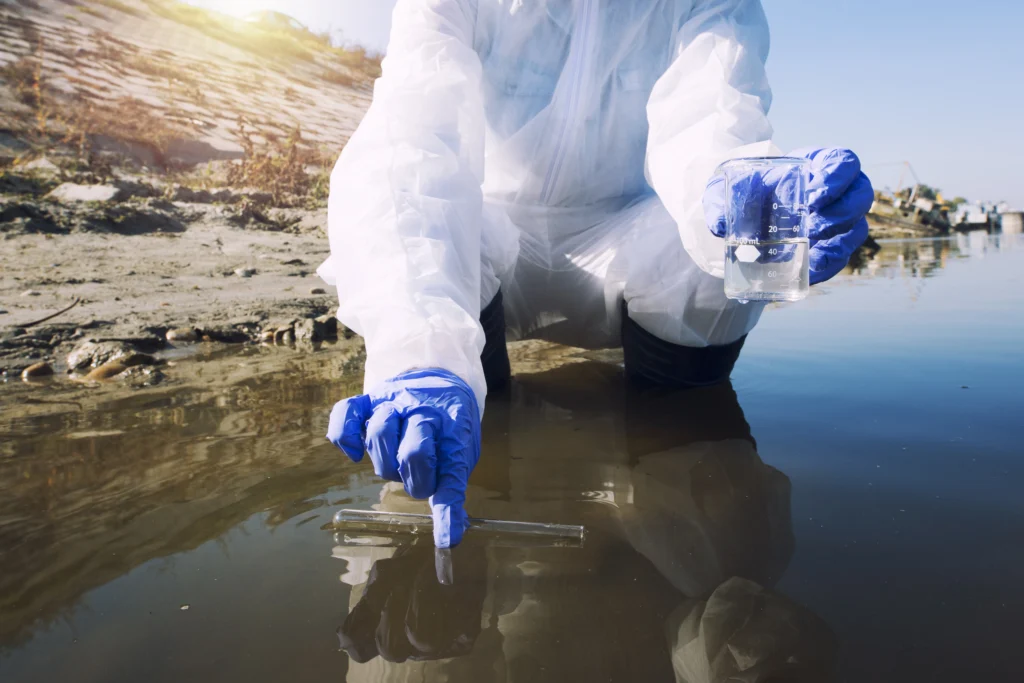Scientists Turn Plastic Waste Into Efficient Carbon Capture Materials
Scientists at the University of Copenhagen in Denmark have recently discovered a way to turn plastic waste into powerful materials that can capture CO₂ from the air. This innovation could be a game-changer for the fight against global warming and pollution.
The Science Behind Plastic Waste Turn into Carbon Materials:
The University of Copenhagen Breakthrough:
Plastic waste is one of the most significant environmental issues of our time. Every year, millions of tons of plastic end up in landfills, oceans & ecosystems. where it takes hundreds of years to decompose. At the same time, another issue is that rising carbon dioxide (CO₂) levels are fueling climate change & which is causing global temperatures to rise and putting our planet at risk. Scientists at the University of Copenhagen have made an incredible discovery by focusing on PET plastic, which is commonly used in bottles and packaging.. They transformed it into a new material called BAETA, which works like a sponge, capturing CO₂ from the air and industrial emissions.
What Is BAETA and How It Works:
The process focuses on PET plastic, the same material used for water bottles, food packaging, and textiles. When these items are thrown away, they often can’t be recycled and become pollution. At the University of Copenhagen, chemists found a way to convert this waste into a new material they called BAETA.
The team has created a substance called BAETA (short for Biological, Adsorptive, and Environmentally Thermoplastic Aggregate). BAETA is a powder that efficiently absorbs CO₂ from atmospheric and industrial emissions. Once captured, the CO₂ can be released in concentrated form when the material is heated, allowing for its storage or reuse.
The ability of BAETA to function as a carbon capture material and address the problem of plastic pollution is what makes it so special. PET plastic can be recycled into a substance that actively reduces CO₂ levels, so it is beneficial for the environment.
Why Plastic Waste Carbon Capture Is Important in Fighting Climate Change
CO₂ capture refers to the process of capturing carbon dioxide from the air or industrial emissions before it can be released into the atmosphere. This is crucial because CO₂ is one of the primary greenhouse gases responsible for global warming. The Earth’s temperature rises and its climate changes when too much CO₂ builds up in the atmosphere, as it retains heat.
Scientists have developed various methods to capture CO₂, but many of these methods are expensive, inefficient, or difficult to scale. That’s where the potential of using plastic waste comes in. Scientists are now exploring how they can convert waste plastic into materials that can effectively absorb and trap CO₂ from the environment.

Environmental Benefits of Plastic Waste Carbon Capture
The creation of BAETA has several significant environmental impacts:
1. Reduces plastic pollution:
As mentioned earlier, plastic waste is a major global issue. Every year, millions of tons of plastic are produced, and only a fraction of it is recycled. The rest ends up in landfills or the environment, where it can take hundreds of years to decompose. PET plastic, in particular, is one of the most common types of plastic waste, contributing significantly to this problem.
2. Fights climate change:
CO₂ is a leading cause of global warming, and reducing its levels in the atmosphere is crucial in combating climate change. Traditional carbon capture methods are often expensive and difficult to scale. BAETA, on the other hand, offers a scalable and reasonably priced method of CO₂ capture from both industrial sources and the air itself.
As this technology advances, it may be applied on a large scale in power plants, factories, and urban areas, helping to reduce global CO₂ levels and slow down the effects of climate change.
3. Supporting the Circular Economy:
The circular economy concept emphasizes reducing waste & reusing resources rather than discarding them. By turning waste plastic into materials that can absorb CO₂, scientists are helping to create a circular economy for plastics. This process enables the recycling of plastic into a useful product, rather than contributing to environmental pollution.
4. Scalable Global Solution:
One of the key benefits of the BAETA technology is its scalability. The process used to create BAETA is relatively simple and can be applied to large quantities of plastic waste. This makes it a potentially extensive solution for both plastic pollution and carbon capture on a global scale.
Latest 2025 Update: Stronger Carbon Capture from Plastic Waste
In September 2025, researchers refined the process of converting PET plastic bottles into BAETA. Their updated method makes BAETA more durable and efficient, allowing it to capture CO₂ for over 40 cycles without losing performance. It releases CO₂ at around 150°C and remains stable up to 250°C, making it easier to reuse in industrial applications. These findings show how scientists can transform plastic waste into a long-lasting and scalable solution that reduces greenhouse gas emissions.
The biggest innovation for the climate challenge:
This discovery highlights the power of science to address multiple global crises with creative solutions. The idea of turning plastic waste into efficient CO₂ capture materials is more than just a scientific curiosity—it’s a real opportunity to fight climate change while cleaning up our planet. If scaled successfully, this technology could transform two major environmental threats into a powerful solution.
FAQs
Q1. How are scientists turning plastic waste into carbon capture materials?
Ans. Scientists are converting PET plastic into a porous material called BAETA, which captures CO₂ from the air. Once it’s full, the trapped CO₂ can be released for storage or reused in various industries.
Q2. What makes BAETA better than traditional carbon capture methods?
Ans. BAETA is cost-effective, reusable, and made from plastic waste, helping to reduce both pollution and expenses. This makes it a more practical alternative to older, expensive carbon capture systems.
Q3. Is large-scale carbon capture possible?
Read more related articles> https://www.climatechallange.com/how-dna-research-unlocking-the-hidden-half-of-plants/

